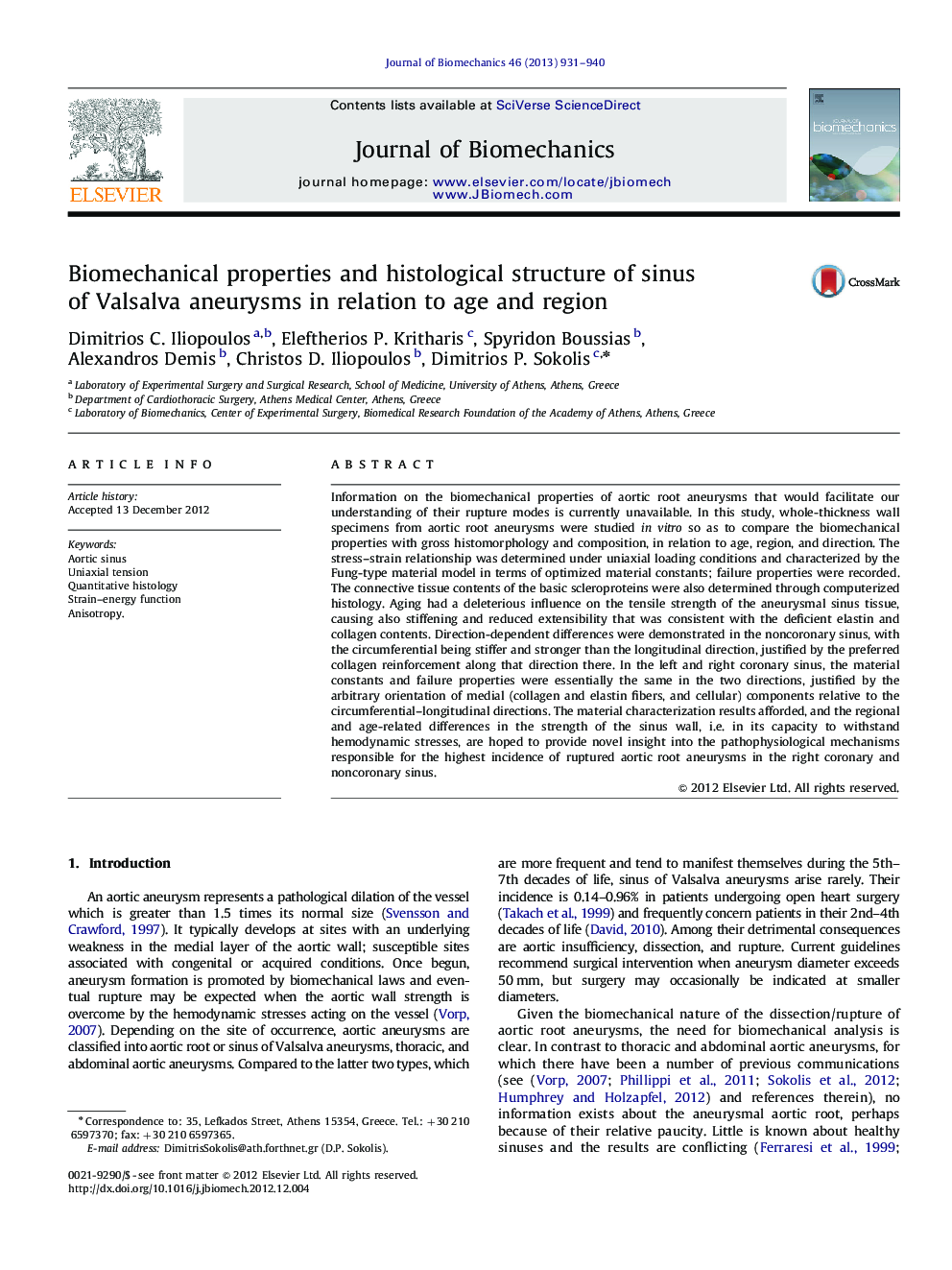| Article ID | Journal | Published Year | Pages | File Type |
|---|---|---|---|---|
| 10432800 | Journal of Biomechanics | 2013 | 10 Pages |
Abstract
Information on the biomechanical properties of aortic root aneurysms that would facilitate our understanding of their rupture modes is currently unavailable. In this study, whole-thickness wall specimens from aortic root aneurysms were studied in vitro so as to compare the biomechanical properties with gross histomorphology and composition, in relation to age, region, and direction. The stress-strain relationship was determined under uniaxial loading conditions and characterized by the Fung-type material model in terms of optimized material constants; failure properties were recorded. The connective tissue contents of the basic scleroproteins were also determined through computerized histology. Aging had a deleterious influence on the tensile strength of the aneurysmal sinus tissue, causing also stiffening and reduced extensibility that was consistent with the deficient elastin and collagen contents. Direction-dependent differences were demonstrated in the noncoronary sinus, with the circumferential being stiffer and stronger than the longitudinal direction, justified by the preferred collagen reinforcement along that direction there. In the left and right coronary sinus, the material constants and failure properties were essentially the same in the two directions, justified by the arbitrary orientation of medial (collagen and elastin fibers, and cellular) components relative to the circumferential-longitudinal directions. The material characterization results afforded, and the regional and age-related differences in the strength of the sinus wall, i.e. in its capacity to withstand hemodynamic stresses, are hoped to provide novel insight into the pathophysiological mechanisms responsible for the highest incidence of ruptured aortic root aneurysms in the right coronary and noncoronary sinus.
Related Topics
Physical Sciences and Engineering
Engineering
Biomedical Engineering
Authors
Dimitrios C. Iliopoulos, Eleftherios P. Kritharis, Spyridon Boussias, Alexandros Demis, Christos D. Iliopoulos, Dimitrios P. Sokolis,
